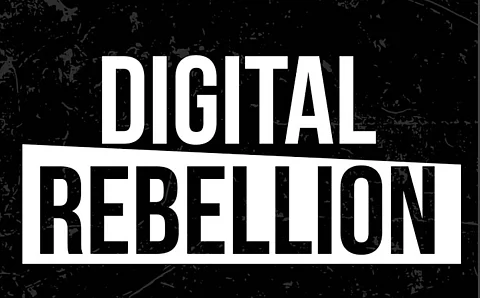
- Home
- Live Blog
- Breaking News
- Top Headlines
- Cities
- NE News
- Sentinel Media
- Sports
- Education
- Jobs

Jilmil Jonak Kashyap
(Miranda House, University of Delhi)
One evening last winter, I found myself scrolling through my Instagram messages, my thumb pausing on names that dominate my daily conversations, eventually landing on accounts that had simply vanished. Each of these absences carried its own story, be it academic pressure, mental health struggles, social comparison, or the general weariness consuming my entire generation. They had consciously abandoned the digital spaces that took more than they gave. This made me wonder what lay beyond those digital borders.
This story isn’t mine alone. A quiet revolution is happening across India, where young people are choosing to disconnect from platforms that once defined their social lives. Across university campuses, workspaces and cities, increasing numbers of young Indians are implementing ‘digital detoxes’. While India hosts 491 million social media users, research indicates that 27% of teenagers exhibit signs of social media dependency, with 40% reporting sleep disturbances linked to late-night screen time. Rather than accepting these conditions as inevitable, a growing number are choosing radical alternatives.
What makes this trend particularly fascinating is that, unlike older generations, many young Indians have no pre-social media reference point. Their rebellion isn’t nostalgia for a simpler time but a response to the impact of addictive algorithms on their development.
The decision to log off becomes clearer when viewed through ‘persuasive design’; interfaces are engineered not merely to give us information or entertainment but to create behavioural dependencies. The calculated system is attuned to the interests of the user. Every post that we linger on is followed by ten of the same kind. Until eventually, our entire feed is filled with bits and pieces of content that can pull us in like a moth to a flame. A few scrolls turn into hours in front of a screen, which adds up to years of our lives lost to a mere machine. Modern social media platforms operate using variable reward schedules that mirror gambling addiction patterns, systematically exploiting neurophysiological processes to trigger dopamine release. These random-ratio reward schedules maximise dopamine release in brain regions involved in reinforcing reward-seeking behaviour. The ability to scroll with no natural stopping points makes users continually check in anticipation of the next reward.
Surprisingly, the demographic that is the most affected by this technology demonstrates remarkable awareness of it. Algorithmic bias, data harvesting, and attention capture are terms you would find frequently brought up in a conversation among young people. They understand they exist not as users but as products sold to advertisers. This awareness has led to the ‘informed refusal’ to participate in these systems.
The relationship between social media usage and academic performance reveals another striking dimension. A significantly higher use of social media is seen among academically low-performing students. Some researchers even claim that an hour spent on social media can lower the odds of good academic performance by 24%. Students who choose disconnection often rediscover sustained intellectual engagement. The mechanism involves what is called attention residue, where part of students’ attention remains anchored to devices even while studying. A single notification disrupts concentration, and even after phones are put away, the minds linger on it.
Research on digital withdrawal identifies consistent symptoms such as initial anxiety and restlessness, followed by improved sleep quality, enhanced concentration, and reduced anxiety.
This proves that platforms create real physiological dependencies. Constant connectivity creates chronic neurochemical stimulation that damages natural reward circuitry. Digital detoxification allows these systems to recalibrate, allowing one to experience positive emotions from non-digital activities.
This rebellion has led to the creation of new forms of social organisation among Indian youth. Groups focusing on ‘digital abstinence’, offline activity clubs, and networking gatherings symbolise an emerging culture prioritising physical presence. Interestingly, these practices also reveal attention capture’s social nature. The individual’s willpower alone is insufficient to resist systematically engineered addiction. The village of Mohityanche Vadgaon in Maharashtra has become a symbol of collective digital consciousness, implementing daily 90-minute digital detoxes where the entire community disconnects from devices.
There are economic and, consequently, class dimensions to this movement. When significant user numbers begin logging off, it threatens business models built on attention capture. An unfortunate implication is the creation of ‘digital class stratification’, where young Indians from economically secure backgrounds can experiment with disconnection, while peers from lower socioeconomic strata remain dependent on digital platforms for educational access and economic opportunities.
When it comes to implementation, the more experienced participants resist binary solutions. Instead, they develop practices of selective engagement, maintaining digital connections serving genuine purposes while rejecting compulsive consumption. This approach requires us to make conscious choices about when, how, and why to engage. A system like this can provide psychological benefits without the social costs of permanent departure.
The phenomenon of Indian youth logging off reveals possibilities for an evolution in our relationship with digital technologies. It is a collective assertion of cognitive sovereignty in an age of organised mental colonisation. Whether this movement will expand into a broader cultural transformation remains uncertain, but there is a possibility that the most digitally native generation may become the most intentionally disconnected. This isn’t from hostility towards new technology but from the knowledge of what is necessary for people to flourish in a hyperconnected world. The movement can chart paths toward more thoughtful, sustainable relationships with the digital tools of the present as well as the future.